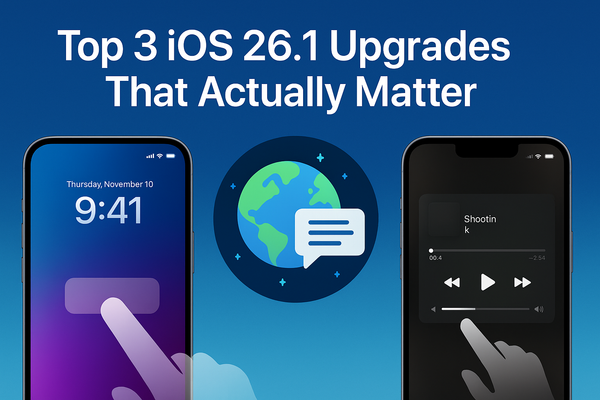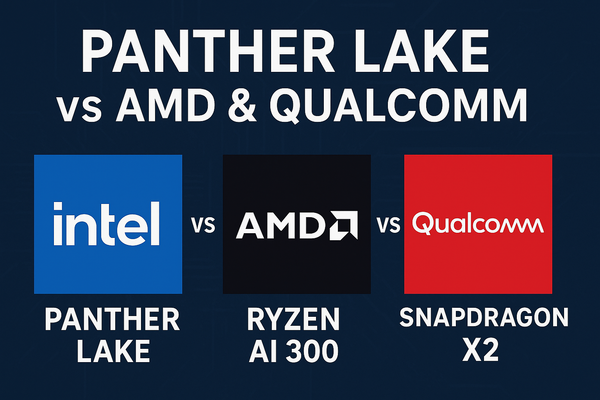The Slimmest Smartphones of 2025

The race for thinner smartphones has defined 2025, with manufacturers pushing the boundaries of engineering to deliver sleek, lightweight devices. Advances in materials like titanium and ultra-thin glass, coupled with optimized internal layouts, have made sub-6 mm slab phones and ultra-slim foldables a reality. However, slimness often comes at the cost of battery capacity, thermal performance, or durability. This article compares the thinnest smartphones available, including the iPhone Air, focusing on their technical specifications and real-world user experiences. The comparison covers both traditional slab phones and foldables, with thickness measured in their slimmest state (unfolded for foldables).
Comparison of Ultra-Thin Smartphones
| Phone Model | Thickness | Type | Technical Highlights |
|---|---|---|---|
| iPhone Air | 5.6 mm | Slab | Apple's slimmest smartphone, crafted with a grade 5 titanium frame and powered by the A19 chip for optimized performance. Its 3,500 mAh battery is compact yet efficient, paired with a Super Retina XDR display. The design avoids camera protrusions via a streamlined "plateau" layout, keeping weight at 165 grams. |
| Tecno Spark Slim | 5.75 mm | Slab | A standout for its minimal thickness, this Android device integrates a 5,000 mAh battery using advanced stacking techniques. Powered by a MediaTek Dimensity chip, it balances performance and heat management, with a lightweight polymer frame for structural integrity. |
| Samsung Galaxy S25 Edge | 5.8 mm | Slab | Samsung's thinnest non-foldable flagship features a uniform aluminum frame and a 200MP camera system without a bump. Its 4,500 mAh battery supports fast charging, but the slim design limits cooling, potentially causing throttling during intensive tasks. Weight is under 170 grams. |
| Oppo Find N5 | 4.21 mm (unfolded), 8.93 mm (folded) | Foldable (book-style) | The thinnest book-style foldable when open, using a water-drop hinge and ultra-thin glass for its flexible OLED display. A carbon fiber frame enhances durability, and a 4,800 mAh dual-cell battery powers multitasking on the large inner screen. |
| Google Pixel 10 Pro Fold | ~4.5 mm (unmedia | Foldable | Google's 2025 foldable, powered by the Tensor G5 chip, prioritizes slimness with a composite frame. Its 4,650 mAh battery supports AI-driven features like advanced photo editing. The hinge allows flexible angles, but the thin profile may reduce drop resistance. |
| Samsung Galaxy Z Fold 7 | ~4.8 mm (unfolded) | Foldable | Features a titanium hinge, IPX8 water resistance, and S Pen support. A 4,400 mAh battery and vapor chamber cooling ensure performance. The slim unfolded profile enhances tablet-like usability, though the display crease remains a minor drawback. |
Engineering Slimness
Achieving such thin profiles requires innovative engineering. For slab phones like the iPhone Air, manufacturers use tightly packed internals, such as stacked batteries and minimized bezels, to fit high-end components into a 5.6 mm frame. This can lead to compromises, like smaller vibration motors or off-center ports. Foldables, such as the Oppo Find N5, leverage flexible displays and advanced hinges to reach sub-5 mm thickness when unfolded, but additional layers increase folded bulk. Materials like titanium and carbon fiber ensure rigidity, while optimized circuit boards and battery designs maximize space.
Key technical trade-offs include:
- Battery Capacity: Slim profiles limit battery size (e.g., iPhone Air’s 3,500 mAh vs. Tecno’s 5,000 mAh), potentially reducing runtime.
- Thermal Management: Reduced space for cooling systems can lead to overheating during tasks like gaming or video recording.
- Durability: Thinner designs risk bending or shattering, though premium materials help mitigate this.
- Ergonomics: Sharp edges and reduced grip can make ultra-thin phones feel less secure in hand.
User Experiences and Feedback
Real-world user feedback highlights the appeal and challenges of these devices. For slab phones, the Samsung Galaxy S25 Edge is praised for its comfortable, lightweight feel, with users noting it feels "sleek and premium" in hand, surviving minor drops thanks to its robust frame. However, some report discomfort from sharp edges and concerns about battery life, with one user stating, "It heats up too quickly during video calls." Others worry about fragility, noting that a thin phone in a back pocket could crack under pressure.
Foldables generate enthusiasm for their transformative design. Users describe the Oppo Find N5 as "feeling like a regular phone when folded but impossibly thin when open," enhancing portability. The Galaxy Z Fold 7 is lauded for its tablet-like versatility, with one user saying, "It’s as thin as my old slab phone, but so much more functional." However, durability concerns persist, with reports of screen scratches or cracks from minor mishandling. Battery life and heat are also issues, with one user noting a thin foldable "struggles with heavy apps and gets warm fast."
The iPhone Air stands out for its premium feel, with users calling it "so light you barely notice it in your pocket." Its thinness enhances one-handed use, but some find the sleek design slippery without a case.
The thinnest smartphones of 2025, from the iPhone Air to the Oppo Find N5, showcase remarkable engineering, balancing aesthetics with functionality. User feedback underscores their portability and premium feel, but challenges like battery life, heat, and fragility remain. For those prioritizing slimness, these devices deliver, but testing them in-store is wise to assess comfort and durability. As technology advances, expect further innovations to refine these trade-offs.




